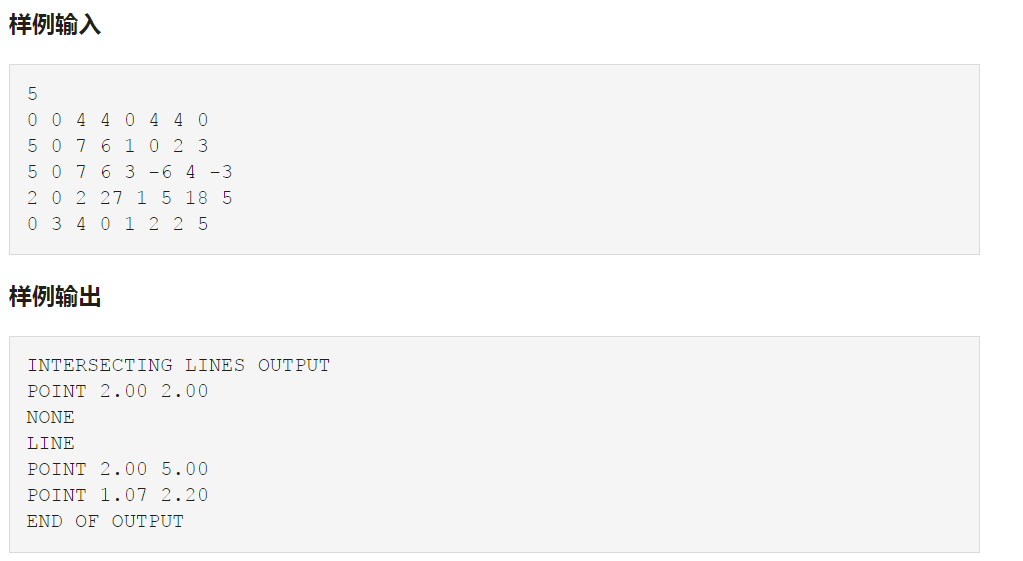1 #include <iostream>
2 #include <cstdlib>
3 #include <cmath>
4 using namespace std;
5 #define CPoint CVector
6 #define PI acos(-1)
7 #define INF 1e20
8 #define EPS 1e-12
9
10 struct CVector
11 {
12 double x, y;
13 CVector(double _x, double _y) :
14 x(_x), y(_y) {}
15 CVector() :x(INF), y(INF) {}
16 };
17
18 struct CLine
19 {
20 CPoint a, b;
21 CLine(CPoint _a, CPoint _b) {
22 a = _a;
23 b = _b;
24 }
25 };
26
27 bool isZero(double x) {
28 return -EPS < x && x < EPS;
29 }
30
31 CVector operator + (CVector p, CVector q) {
32 return CVector(p.x + q.x, p.y + q.y);
33 }
34
35 CVector operator - (CVector p, CVector q){
36 return CVector(p.x - q.x, p.y - q.y);
37 }
38
39 double operator ^(CVector p, CVector q) {
40 return p.x * q.y - p.y * q.x;
41 }
42
43 double area(CVector p, CVector q) {
44 return (p ^ q) / 2;
45 }
46
47 double operator *(CVector p, CVector q) {
48 return p.x*q.x + p.y*q.y;
49 }
50
51 CVector operator *(double k, CVector p) {
52 return CVector(k*p.x, k*p.y);
53 }
54
55 double length(CVector p) {
56 return sqrt(p * p);
57 }
58
59 double dist(CPoint p, CLine l) {
60 return fabs((p - l.a) ^ (l.b - l.a)) / length(l.b - l.a);
61 }
62
63 CPoint interset(CLine l, CLine m, string &msg) {
64 double x = area(m.a - l.a, l.b - l.a);
65 double y = area(l.b - l.a, m.b - l.a);
66 if (isZero(x + y)) {
67 if (isZero(dist(l.a, m)))
68 msg = "LINE";
69 else msg = "NONE";
70 return CPoint();
71 }
72 msg = "POINT";
73 return m.a + (x / (x + y)) * (m.b - m.a);
74 }
75
76 int main()
77 {
78 int N = 0;
79 cin >> N;
80 printf("INTERSECTING LINES OUTPUT
");
81 while (N--) {
82 int x1, y1, x2, y2, x3, y3, x4, y4;
83 string msg;
84 cin >> x1 >> y1 >> x2 >> y2 >> x3 >> y3 >> x4 >> y4;
85 CLine l = CLine(CPoint(x1, y1), CPoint(x2, y2));
86 CLine m = CLine(CPoint(x3, y3), CPoint(x4, y4));
87 CPoint p = interset(l, m, msg);
88 if (p.x == INF) printf("%s
", msg.c_str());
89 else printf("%s %.2f %.2f
", msg.c_str(), p.x, p.y);
90 }
91 printf("END OF OUTPUT
");
92 //system("pause");
93 return 0;
94 }
